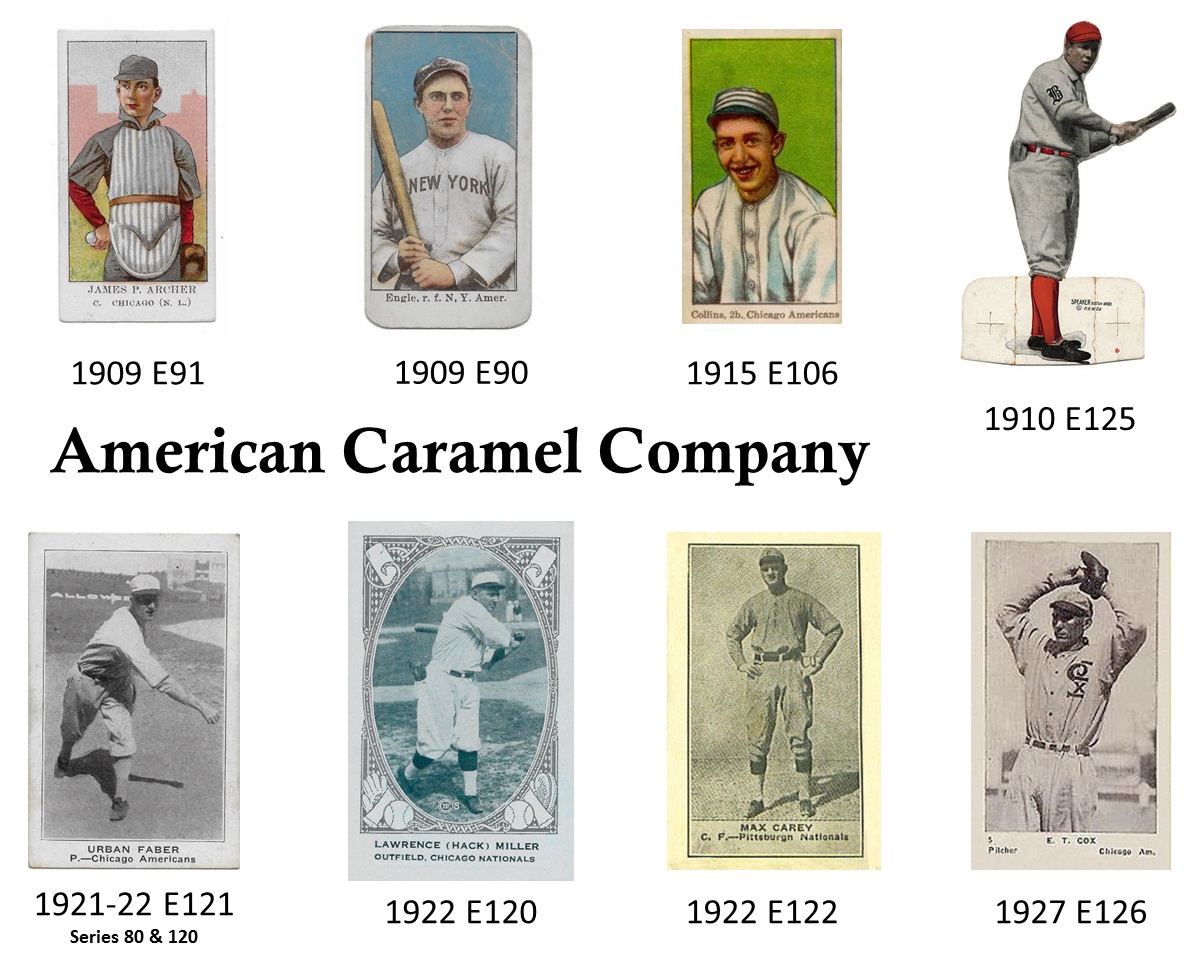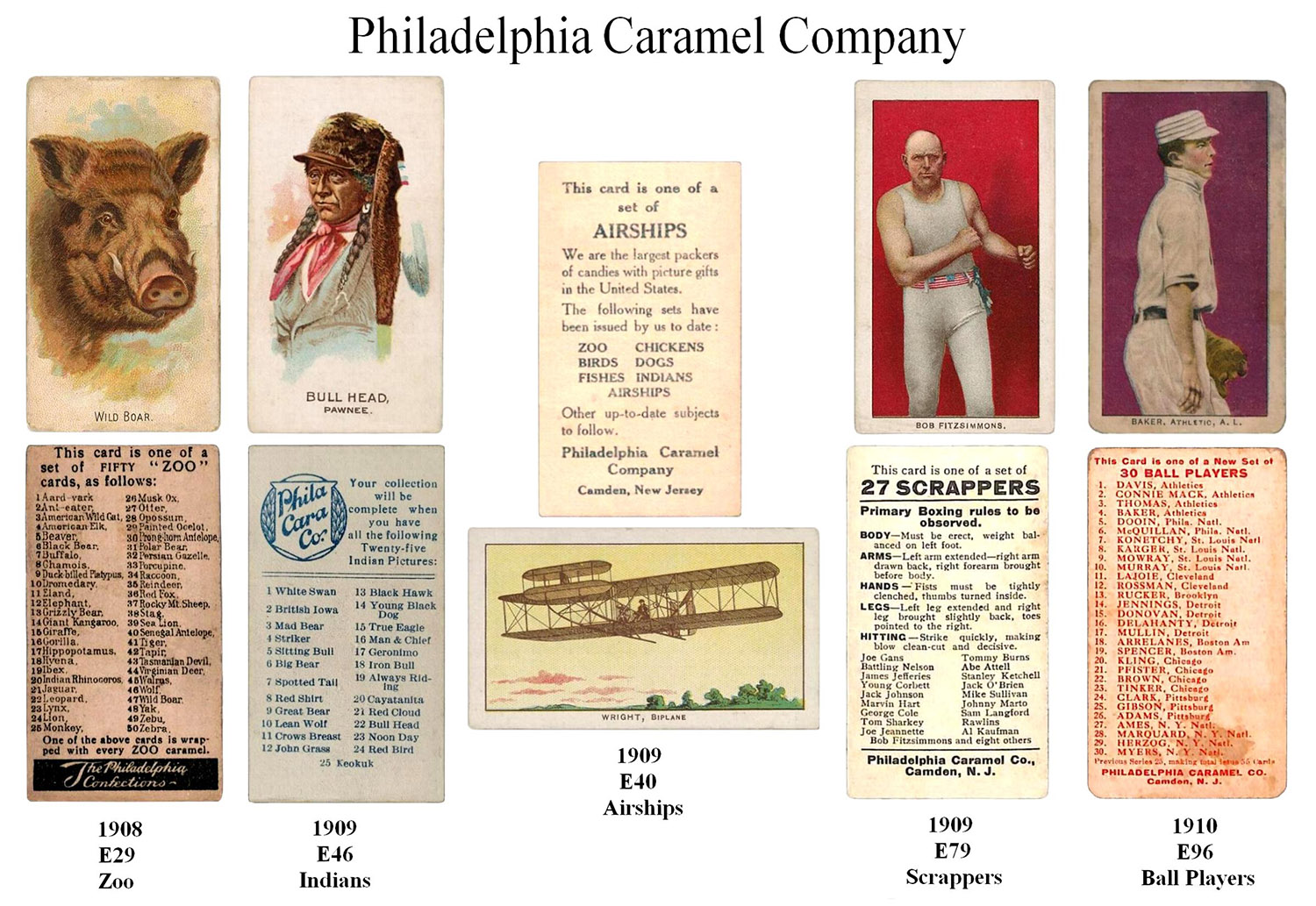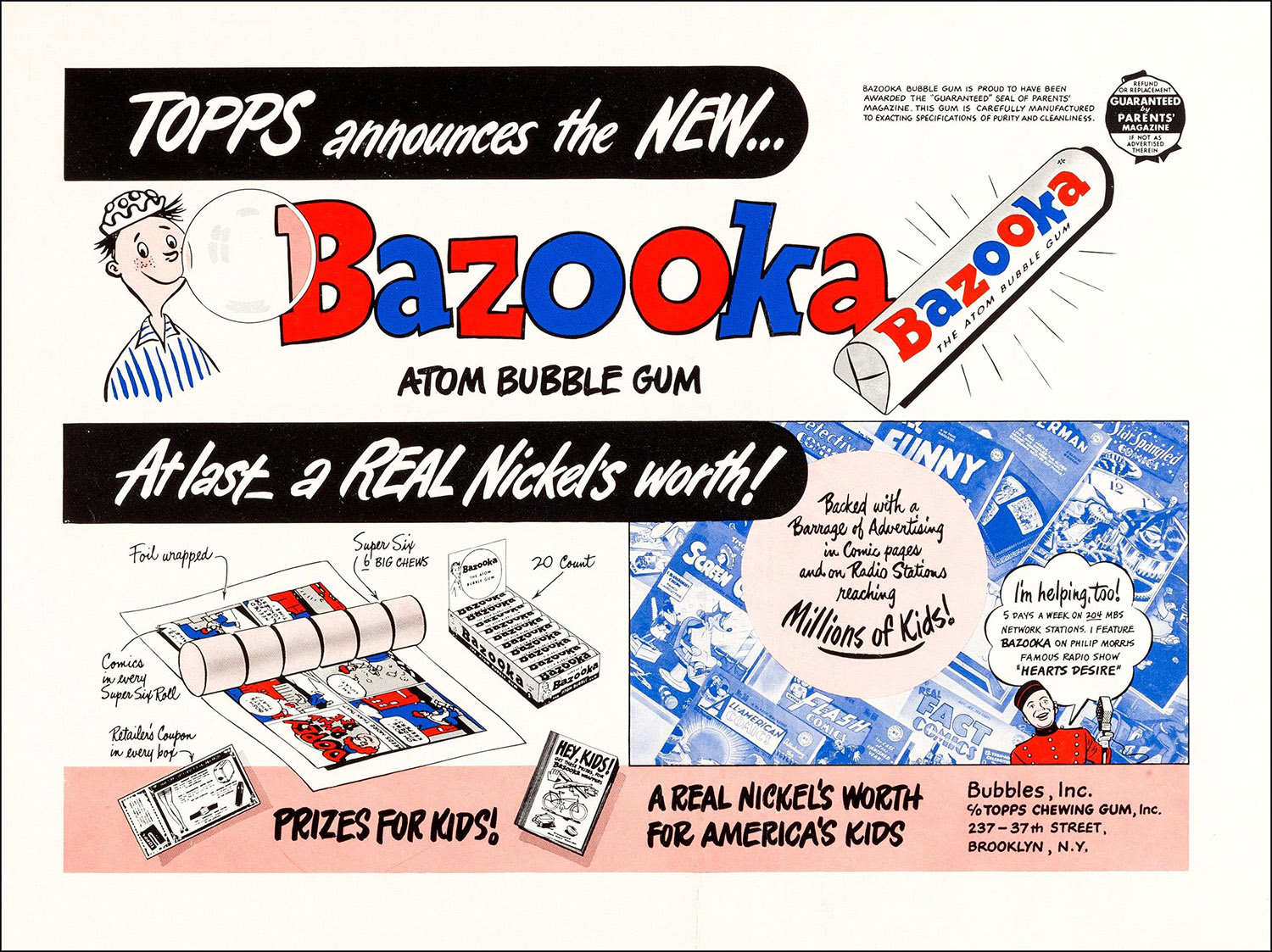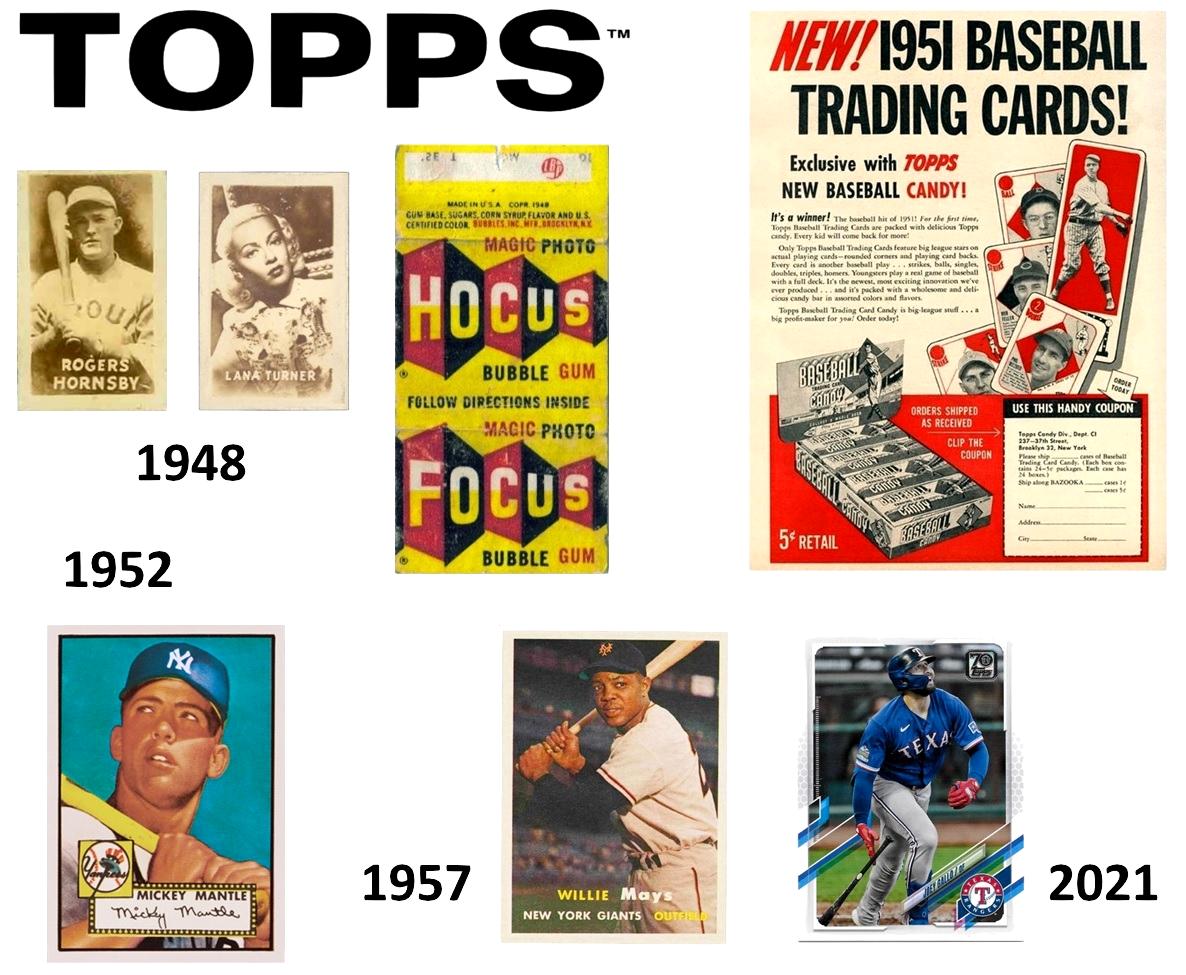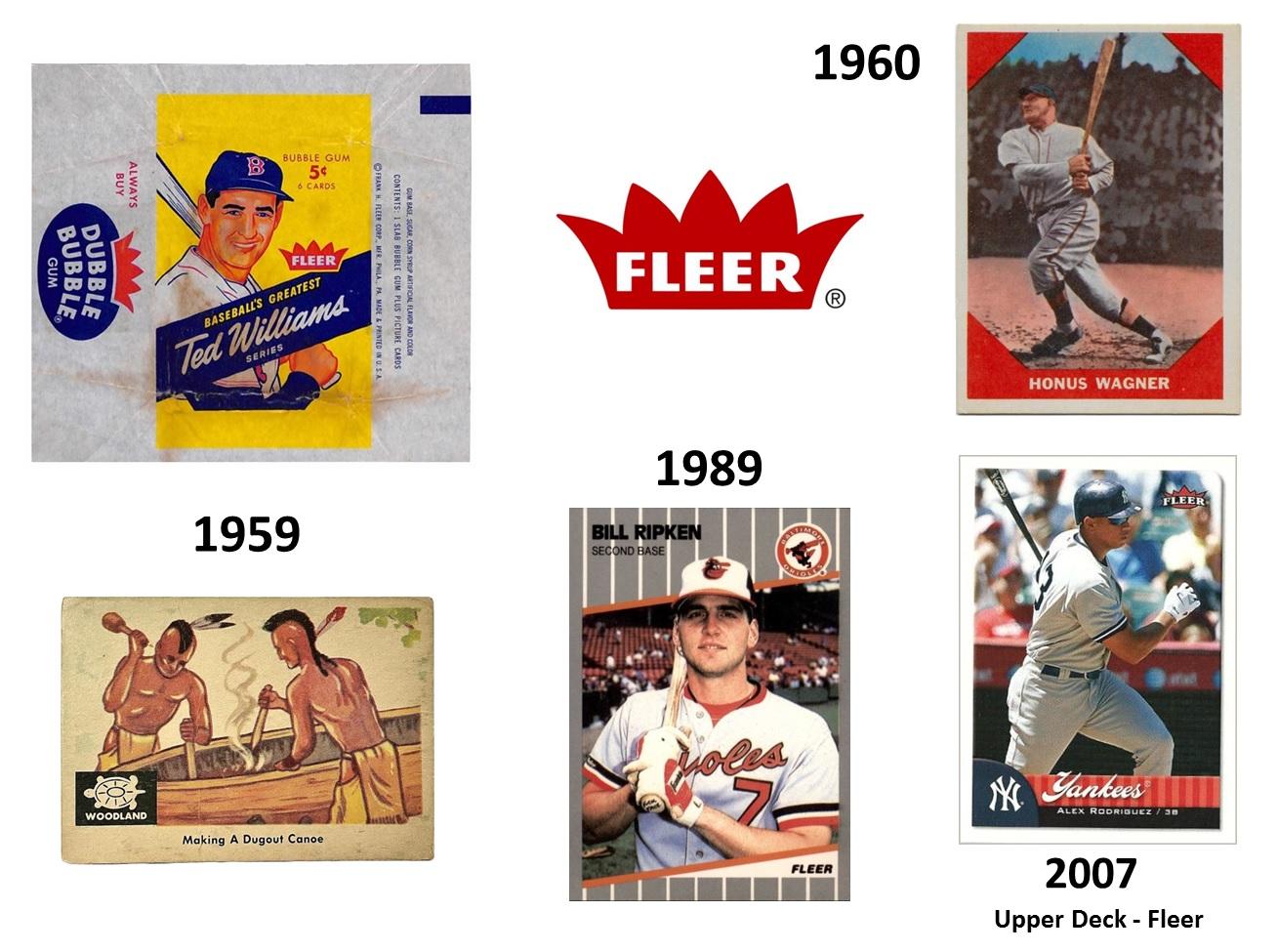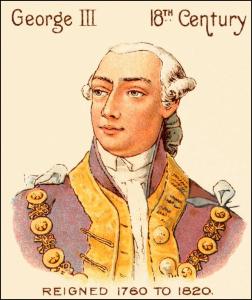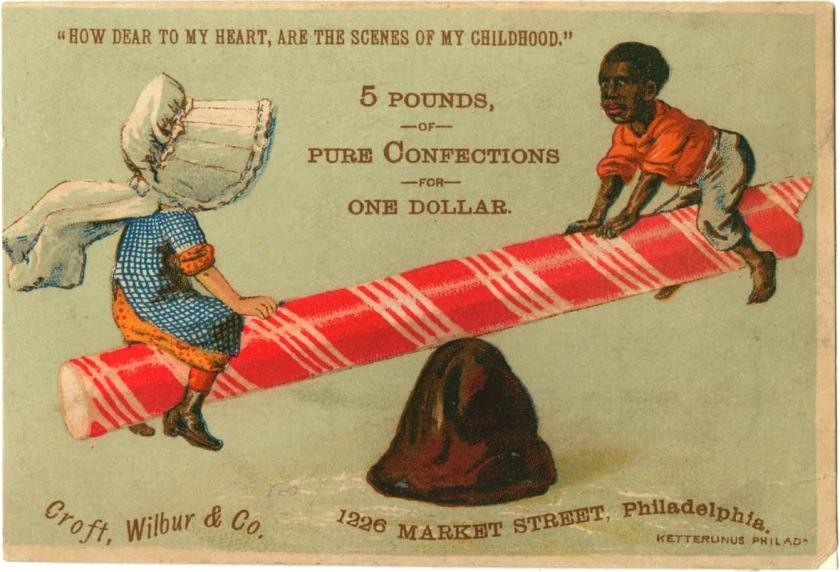
Previously we saw how events and resources came together to make Southeastern Pennsylvania the birthplace of candy and gum cards. However who had been the folks and corporations behind the scenes, those that gave us our cardboard treasures?
On the finish of the Civil Struggle, Henry Wilbur owned a range and {hardware} enterprise in Vineland, NJ. He began a dialog in a practice station with Samuel Croft, who had a small sweet store in Philadelphia. They observed the rising variety of folks touring by practice out and in of Philadelphia. They bought the concept to make sweet and promote it at practice stations and on trains. Croft knew sweet making and Wilbur understood manufacturing. They first made molasses candies however quickly expanded to confections of every type. And so they adopted using commerce playing cards as a part of their early advertising and marketing efforts. Some, equivalent to this one, had been fairly fascinating contemplating that the Civil Struggle had solely ended just a few years earlier.
Henry Wilbur actually thought chocolate had essentially the most development potential within the sweet trade and he needed that to be the main focus of the enterprise. Sam Croft was extra all in favour of sugar based mostly candies. So in 1884 the 2 divided the corporate’s property—with Wilbur creating H.O. Wilbur & Sons whereas Croft took on a brand new companion, forming Croft & Allen. By the early 1900s each corporations had been placing playing cards of their merchandise, however Croft centered on baseball whereas Wilbur largely did different topics. There may be one little identified Wilbur “baseball” card, which allowed clients to decorate a younger boy in a baseball uniform together with a number of different outfits.
Wilbur’s break-through product, launched in 1893, was the “Wilbur Bud”. This distinctive formed, foil-wrapped chocolate chunk was the most well-liked chocolate sweet offered in America for nearly 30 years. It’s believed that Wilbur’s success with chocolate, and that of one other early Philadelphia chocolatier, Stephen Whitman (of Whitman Sampler fame) offered the inspiration for a man named Milton Hershey to construct an empire based mostly on chocolate making.
In 1886 Hershey had began the Lancaster Caramel Firm. By 1894 he had 1400 workers making caramel. After watching the expansion of Wilbur and Whitman, Hershey grew to become satisfied that chocolate was the way forward for the sweet trade. He created a subsidiary known as Hershey’s Chocolate. Then in 1900 he offered all the Lancaster Caramel property to opponents who modified the identify of Lancaster Caramel to the American Caramel Firm.
However Hershey saved the subsidiary, Hershey’s Chocolate. In 1907, fourteen years after the introduction of the Wilbur Bud, Hershey began producing a copycat that he known as “Hershey’s Kisses.” Wilbur Buds continued to outsell Hershey’s Kisses till 1921 when Hershey added a paper plume to his wrapper and marketed that it recognized “the unique Hershey’s Kiss”, implying that he was the originator of the chocolate sweet, despite the fact that his “Kiss” was really a Wilbur Bud knock-off. Hershey’s now dominates the chocolate sweet trade however each Hershey’s Kisses and Wilbur Buds are nonetheless made at the moment. Sadly, neither include playing cards.
Regardless that Hershey didn’t give us any baseball playing cards, he did situation different E-cards—and he’s nonetheless actually vital in our story.
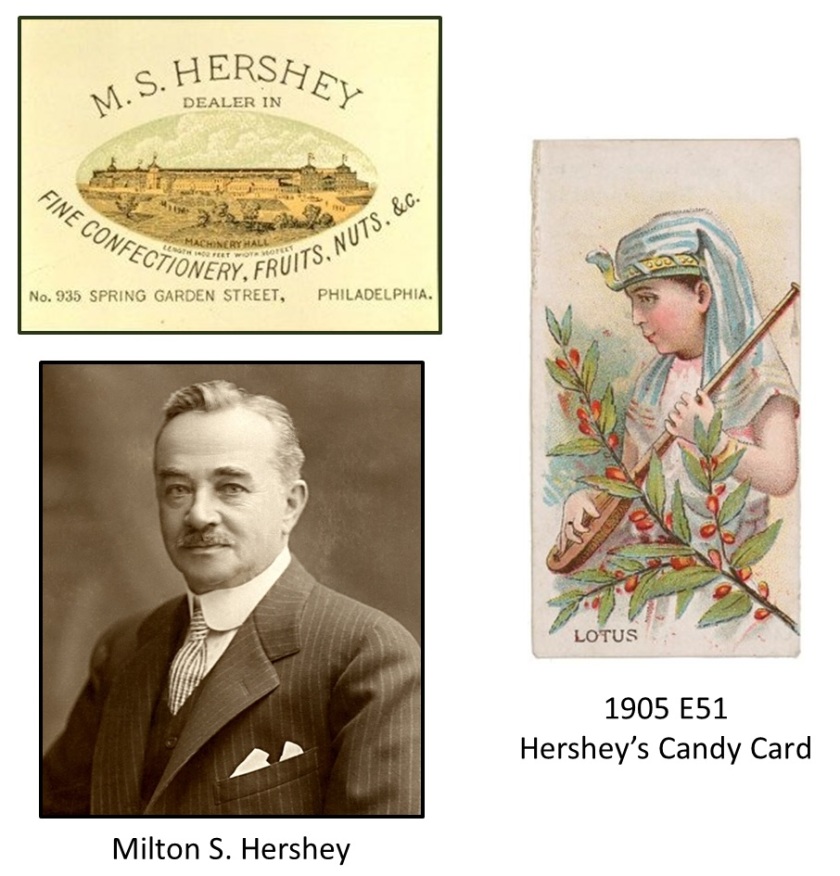 As we’ve seen, when Lancaster Caramel was offered it grew to become the American Caramel Firm. However, a number of of the executives left and began different caramel corporations, together with Commonplace Caramel.
As we’ve seen, when Lancaster Caramel was offered it grew to become the American Caramel Firm. However, a number of of the executives left and began different caramel corporations, together with Commonplace Caramel.
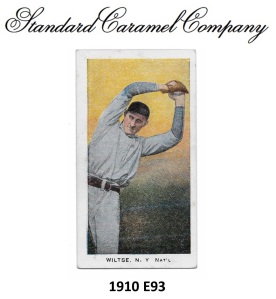 As talked about beforehand, George Breisch and Henry Williams had been each former Hershey workers and American Caramel executives who took over the Oxford Caramel manufacturing facility. After their Breisch-Williams firm put out the primary E-cards the corporate advanced, first as Williams Caramel, after which Oxford Confectionery. There have been baseball and different buying and selling playing cards inserted in merchandise beneath every of those firm iterations.
As talked about beforehand, George Breisch and Henry Williams had been each former Hershey workers and American Caramel executives who took over the Oxford Caramel manufacturing facility. After their Breisch-Williams firm put out the primary E-cards the corporate advanced, first as Williams Caramel, after which Oxford Confectionery. There have been baseball and different buying and selling playing cards inserted in merchandise beneath every of those firm iterations.
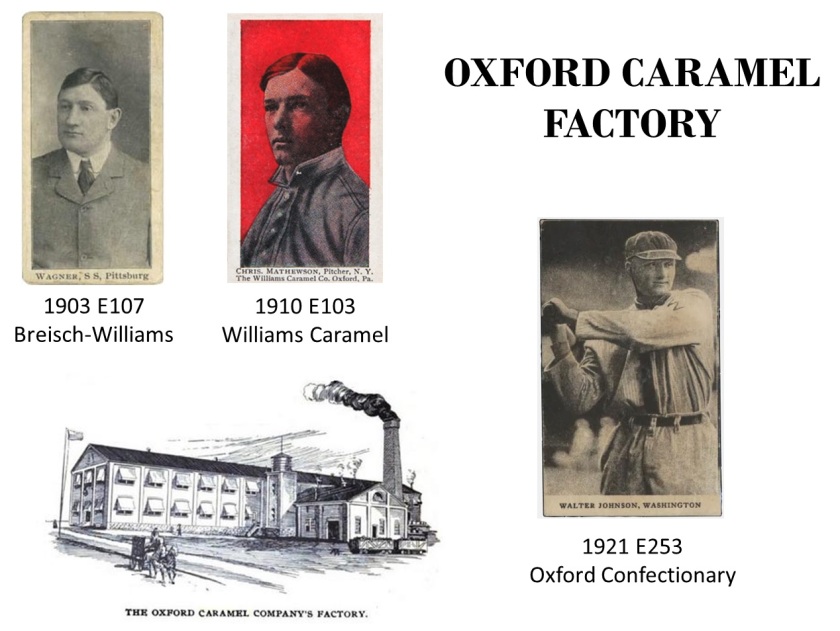 Hershey’s former firm, now American Caramel, grew to become the biggest caramel producer in the USA and put out essentially the most E-card units. Together with dozens of different buying and selling card units, 9 of the E-baseball units had been made by American Caramel. However, it needs to be famous that, whereas the American Caramel Firm issued essentially the most units of E-cards, the longest working and largest E-set resulted from San Francisco’s Collins-McCarthy Sweet Firm recurrently inserting a baseball card in every of their Zee-Nut sweet bars from 1911 throughout 1938, extending effectively into the R-card interval. This resulted in over 3000 totally different playing cards within the one set that Burdick categorised as E137.
Hershey’s former firm, now American Caramel, grew to become the biggest caramel producer in the USA and put out essentially the most E-card units. Together with dozens of different buying and selling card units, 9 of the E-baseball units had been made by American Caramel. However, it needs to be famous that, whereas the American Caramel Firm issued essentially the most units of E-cards, the longest working and largest E-set resulted from San Francisco’s Collins-McCarthy Sweet Firm recurrently inserting a baseball card in every of their Zee-Nut sweet bars from 1911 throughout 1938, extending effectively into the R-card interval. This resulted in over 3000 totally different playing cards within the one set that Burdick categorised as E137.
One sweet maker who definitely displays the variety of E-Playing cards, and the significance of together with baseball, is Jacob Schleicher’s Philadelphia Caramel Firm. Schleicher had come to America to introduce the primary sensible gasoline engine on the 1876 Centennial World’s Honest. After promoting his engine franchise he realized of Milton Hershey’s shift from caramel to chocolate. His concept was to make sweet that mixed chocolate with caramel so he created the Philadelphia Caramel Firm to just do that. For the reason that most profitable sweet corporations had been promoting with playing cards, so did Schleicher. He began with zoo playing cards as a result of Philadelphia had the biggest zoo within the Americas. He used Indian playing cards due to curiosity within the west at a time when Geronimo was nonetheless alive. He made an airship collection simply 4 years after the Wright Brothers’ first flight. He used prize fighter playing cards when he discovered president Theodore Roosevelt was a boxing fan. And he put out a set of baseball playing cards because the Athletics had been battling Detroit for the American League pennant in 1909 and one other because the A’s had been on their approach to profitable the World Sequence in 1910.
As with the opposite corporations who used buying and selling playing cards to advertise their merchandise, the kind of playing cards that had been made trusted the pursuits of the folks the product was aimed toward. Baseball was considered one of these, however not the one one. What’s fascinating is that the general public has maintained its curiosity in baseball over all the different topics included in buying and selling playing cards through the years. And, for nearly so long as there have been sweet and gum playing cards, after which simply buying and selling playing cards with out gum, baseball has persistently been one of many well-liked topics.
Whereas Jefferson Burdick’s American Card Catalog was intensive, it wasn’t complete. One firm that had baseball playing cards within the E-card period however wasn’t included, was the Frank H. Fleer Company. Among the many many confectioners to arrange enterprise in Philadelphia, Frank Fleer established his sweet firm there in 1885. The corporate’s early makes an attempt at promoting chewing gum had been met with restricted success. Then Fleer developed a sweet shell coated, chicle-based chewing gum often known as Chiclets which grew to become the primary gum with broad distribution.
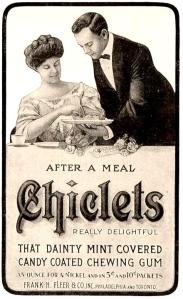 As Fleer added numerous flavors of sweet coatings on his gum merchandise they had been offered beneath totally different names. Amongst these had been peppermint flavored Bobs and a fruit taste model known as Fruit Hearts. In 1923 Fleer packaged a set of baseball playing cards in bins of each Bobs and Fruit Hearts chewing gums.
As Fleer added numerous flavors of sweet coatings on his gum merchandise they had been offered beneath totally different names. Amongst these had been peppermint flavored Bobs and a fruit taste model known as Fruit Hearts. In 1923 Fleer packaged a set of baseball playing cards in bins of each Bobs and Fruit Hearts chewing gums.
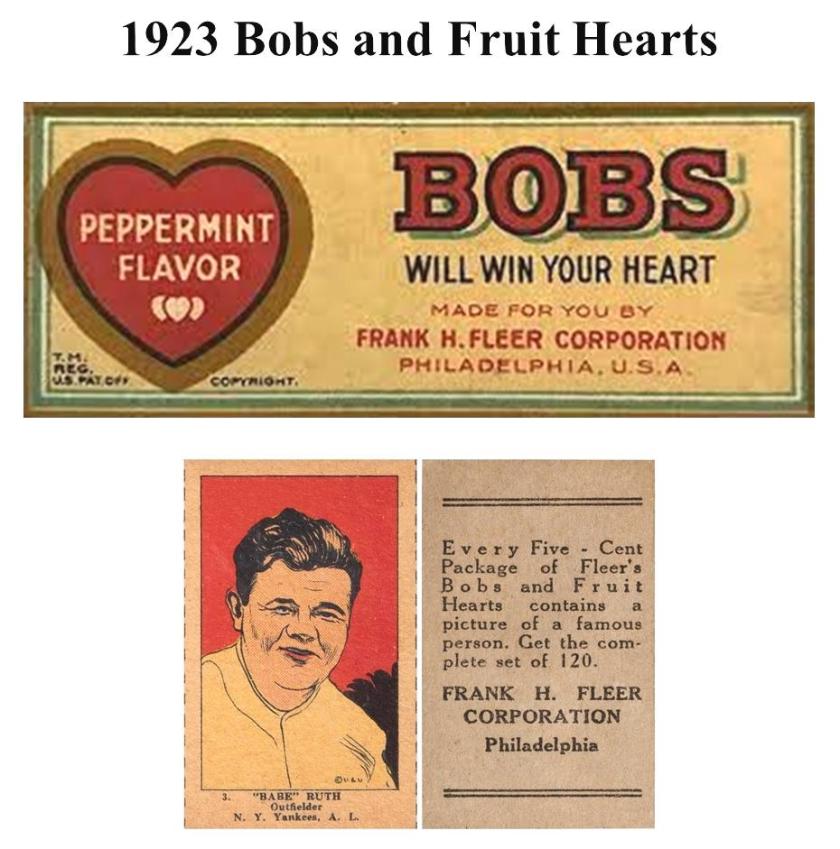 In 1928 Walter Deimer, a Fleer worker, developed the primary commercially profitable bubble gum, offered as Double Bubble. Dubble Bubble was distinctive and instantly grew to become well-liked with out the expense of selling gimmicks, like playing cards.
In 1928 Walter Deimer, a Fleer worker, developed the primary commercially profitable bubble gum, offered as Double Bubble. Dubble Bubble was distinctive and instantly grew to become well-liked with out the expense of selling gimmicks, like playing cards.
Round that very same time, in Philadelphia, Jacob Warren Bowman additionally began an organization named Gum, Integrated. His bubble gum was known as Blony.
 To compete with Fleer, Bowman’s firm began packaging “Wild West Sequence” and “Pirates Photos” card units in Blony in 1933. In that very same 12 months World Huge Gum in Canada and their US subsidiary Goudey in Boston launched a significant advertising and marketing marketing campaign packaging baseball and different buying and selling playing cards in themed packs of gum. A number of smaller corporations, together with the DeLong Gum Firm and George C. Miller Sweet Firm additionally included baseball playing cards, now prized by collectors, with their merchandise that 12 months. These had been among the many first merchandise acknowledged by Burdick as R-cards, the subsequent technology of playing cards that got here with gum, sweet, and meals. And these corporations in Philadelphia and Boston saved “penny sweet” and gum promoting, even on the peak of the Nice Despair. The Goudey baseball playing cards, specifically, had been very talked-about once they got here out and are nonetheless a favourite amongst at the moment’s collectors.
To compete with Fleer, Bowman’s firm began packaging “Wild West Sequence” and “Pirates Photos” card units in Blony in 1933. In that very same 12 months World Huge Gum in Canada and their US subsidiary Goudey in Boston launched a significant advertising and marketing marketing campaign packaging baseball and different buying and selling playing cards in themed packs of gum. A number of smaller corporations, together with the DeLong Gum Firm and George C. Miller Sweet Firm additionally included baseball playing cards, now prized by collectors, with their merchandise that 12 months. These had been among the many first merchandise acknowledged by Burdick as R-cards, the subsequent technology of playing cards that got here with gum, sweet, and meals. And these corporations in Philadelphia and Boston saved “penny sweet” and gum promoting, even on the peak of the Nice Despair. The Goudey baseball playing cards, specifically, had been very talked-about once they got here out and are nonetheless a favourite amongst at the moment’s collectors.
Goudey’s success with baseball playing cards didn’t go unnoticed n Philadelphia. In 1939, Gum, Inc. switched to baseball playing cards, placing a Play Ball Gum card in every bundle. Each Play Ball and Goudey had playing cards till the beginning of World Struggle 2. Whereas Goudey offered gum after WW2 they made no extra playing cards. Gum, Inc. was renamed the Bowman Gum Firm and took a unique promoting route, focusing closely on GIs who had simply returned from the struggle. However, by 1948 Bowman refocused on youngsters, packaging sports activities playing cards with their gum.
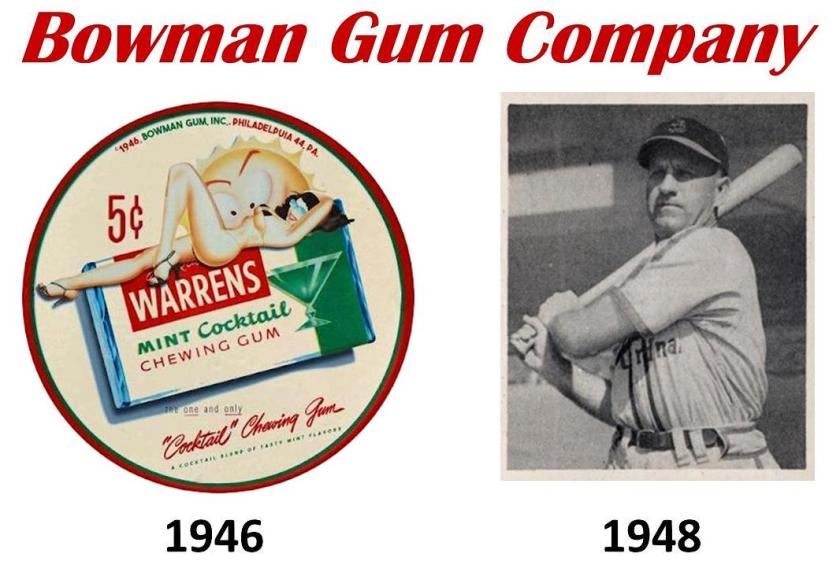 Even with out freely giving playing cards, Fleer’s Dubble Bubble was nonetheless promoting effectively, however it could quickly be apparent that as a way to keep within the recreation they wanted to have playing cards too—particularly with a brand new participant 90 miles north of them getting into the competitors.
Even with out freely giving playing cards, Fleer’s Dubble Bubble was nonetheless promoting effectively, however it could quickly be apparent that as a way to keep within the recreation they wanted to have playing cards too—particularly with a brand new participant 90 miles north of them getting into the competitors.
In Brooklyn New York, the homeowners of two struggling corporations, American Leaf Tobacco and American Gasoline Stations, determined to completely change route in 1938. After divesting their pursuits in tobacco and gasoline gross sales they created a brand new firm that made gum. They’d tall aspirations and named their firm Topps. Their signature product was Bazooka Bubble Gum.
In 1948, to tackle their competitors in Philadelphia, TOPPS began packaging playing cards with their gum.
Then, in 1956, Topps bought the Bowman Company. By doing this they eradicated considered one of their main opponents and Blony gum was no extra.
However, in 1959 Fleer got here out with a number of card units, which included the Ted Williams set, in an effort to remain aggressive with quickly rising Topps. What had began as a advertising and marketing struggle between sweet and gum corporations had grow to be a battle for dominance of the buying and selling card trade.
There have been authorized rights battles, the gum bought misplaced, extra corporations merged, and now most baseball playing cards are offered outright… with restricted version baseball playing cards, moderately than gum, now used as worth added premiums to promote different baseball playing cards. And now, over the previous 50 years, free playing cards as soon as given away to create further worth for different merchandise have come to be known as “odd balls.”
The place the cardboard trade goes from right here is murky. However the playing cards that youngsters collected with gum, and people offered at the moment, can hint their ancestry again to the early sweet playing cards. Philadelphia and the encompassing space was really the cornerstone for at the moment’s baseball card trade.
So, you probably have any curiosity in baseball playing cards, you would possibly wish to thank the British Parliament and King George III for getting issues began.
American Card Catalog Early Sweet and Gum Units
| 1903-4 |
E107 |
Breisch-Williams | Oxford, PA |
|
1908 |
E91-A |
American Caramel Co. | Lancaster, PA |
|
1909 |
E91-B |
American Caramel Co. | Lancaster, PA |
|
1909 |
E92-1 |
John H. Dockman & Son, Inc. | Baltimore, MD |
|
1909 |
E92-2 |
Croft & Allen Sweet Co. | Philadelphia, PA |
|
1909 |
E92-3 |
Croft & Allen Cocoa Co. | Philadelphia, PA |
|
1909 |
E92-4 |
Blake-Wenneker Sweet Firm (Nadja) | St. Louis, MO |
|
1909 |
E95 |
Philadelphia Caramel Co. | Philadelphia, PA (Camden, NJ) |
|
1909 |
E97 |
C.A. Briggs Lozenge Makers | Boston, MA |
|
1909 |
E101 |
Nameless | Unknown |
|
1909 |
E102 |
Nameless | Unknown |
|
1909 |
E254 |
Colgan Gum Firm | Louisville, KY |
|
1909-11 |
E90-1 |
American Caramel Co. | Philadelphia (Lancaster), PA |
|
1910 |
E90-2 |
American Caramel Co. | Philadelphia (Lancaster), PA |
|
1910 |
E90-3 |
American Caramel Co. | Lancaster, PA |
|
1910 |
E91-C |
American Caramel Co. | Lancaster, PA |
|
1910 |
E93 |
Commonplace Caramel Co. | Lancaster, PA |
|
1910 |
E96 |
Philadelphia Caramel Co. | Philadelphia, PA (Camden, NJ) |
|
1910 |
E98 |
Unverified however seems to be Commonplace Caramel Co. | Lancaster, PA |
|
1910 |
E99 |
Bishop & Firm | Los Angeles, CA |
|
1910 |
E103 |
Williams Caramel Co. | Oxford, PA |
|
1910 |
E104 |
Blake-Wenneker Sweet Firm (Nadja) | St. Louis, MO |
|
1910 |
E105 |
Texas Gum Firm (Mello Mints) | Temple, TX |
|
1910 |
E125 |
American Caramel Co. | Lancaster, PA |
|
1910 |
E222 |
AWH Caramel Co. | Richmond, VA |
|
1910 |
E221 |
Bishop & Firm (Staff Playing cards) | Los Angeles, CA |
|
1910 |
E271 |
Darby’s Chocolate Firm | Baltimore, MD |
|
1910 |
E286 |
AMM Sweet Co. (Ju-Ju Drums) | Unknown |
|
1911 |
E100 |
Bishop & Firm | Los Angeles, CA |
|
1911 |
E94 |
Shut Sweet Co. | Cambridge, MA |
|
1911-38 |
E137 |
Collins-McCarthy Sweet Co. (Zee-Nut) | San Francisco, CA |
|
1912 |
E270 |
Colgan Gum Firm | Louisville, KY |
|
1912 |
E136 |
Collins-McCarthy Sweet Co. (Residence Run Kisses) | San Francisco, CA |
|
1912 |
E300 |
Plow’s Sweet Co. | St. Louis, MO |
|
1914 |
E145-1 |
Rueckheim Bros. & Eckstein Co. (Cracker Jack) | Chicago. IL |
|
1914 |
E224 |
Cardinet Sweet Co. (Texas Tommy) | Oakland, CA |
|
1915 |
E106 |
American Caramel Co. | York, PA |
|
1915 |
E145-2 |
Rueckheim Bros. & Eckstein Co. (Cracker Jack) | Chicago. IL |
|
1917 |
E135 |
Collins-McCarthy Sweet Co. | San Francisco, CA |
|
C 1920 |
E268-5 |
H.O. Wilbur & Sons (Little Will-Burr) | Philadelphia (Lititz), PA |
|
1921 |
E253 |
Oxford Confectionary | Oxford, PA |
|
1921-22 |
E121 |
American Caramel Co. | Lancaster, PA |
|
1921-23 |
E220 |
Nationwide Caramel | Lancaster, PA |
|
1922 |
E120 |
American Caramel Co. | Lancaster, PA |
|
1922 |
E122 |
American Caramel Co. | Lancaster, PA |
|
1223 |
E123 |
Curtis Eire Sweet Company | St. Louis, MO |
|
1927 |
E126 |
American Caramel Co. | Lancaster, PA |
|
1927-28 |
E210 |
York Caramel Co. | York, PA |
|
1933 |
E285 |
Rittenhouse Sweet Co. | Philadelphia |
|
Units |
Places | ||
|
25 |
Keystone Strip (Philadelphia and Surrounding Space) | ||
|
2 |
Baltimore | ||
|
4 |
St. Louis | ||
|
2 |
Massachusetts | ||
|
2 |
Louisville | ||
|
7 |
California | ||
|
1 |
Texas | ||
|
1 |
Virginia | ||
|
2 |
Chicago | ||
|
3 |
Unknown | ||
|
49 |
Complete | ||
| * The 1888 E223 Inexperienced & Blackwell Chewing Gum set is deliberately left off this listing as a result of the corporate didn’t exist within the twentieth century and their playing cards had been issued earlier than the Dingley Act took impact. | |||
Trending Merchandise


